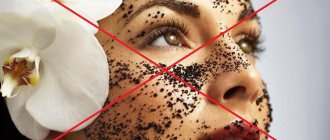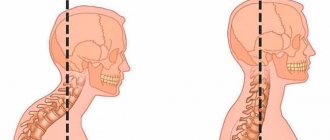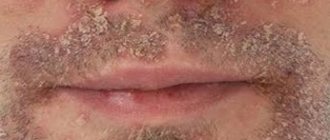Ingrown toenail (onychocryptosis) - This is the ingrowth of the nail plate into the lateral edge of the nail fold.
Ingrown toenails occur in patients of all ages. It is most often observed on the inside of the big toe, but can also occur on the nail plates of the hands. The largest number of requests for help from patients occurs in the spring-summer period, when there is a seasonal change from closed shoes to open, often narrow, dress shoes.
The nail plates on the hands and feet originate in the matrix area located at the base of the nail. The white, crescent-shaped area of the nail root (the socket) is the visible part of the nail matrix. Nail growth occurs due to the division of germ cells, which gradually “push” the old nail plate forward.
On average, a nail grows 0.1 mm per day (or 3 mm per month) and completely changes in 105 days. In women, the nail plate grows a little slower than in men, and in children it grows twice as fast as in adults. The convex shape of the nail plate provides a protective function: it partially dampens the mechanical impact and partially transfers it to the soft tissues of the side fold.
The side bolsters act as so-called shock-absorbing cushions, so damage to them leads to disruption of the protective structures and can contribute to the occurrence of various nail diseases.
Causes of ingrown toenails
- Improper
nail care is the main cause of ingrown nails, when the corners of the nail are cut too deep, which leads to improper growth of the nail plate and ingrowth into the soft tissue of the periungual fold. Also, the corner of the nail may not be trimmed enough and the free edge will dig into the side ridge; in the presence of hyperhidrosis, this can provoke an ingrowth. - One of the factors contributing to the development of an ingrown nail into the lateral edge of the nail fold is the congenital or acquired expansion of the strip of the growth layer of the nail plate. A wide growth zone leads to the formation of a wide nail plate, as a result, part of the growing edge puts pressure on the nail fold, injuring it. Inflammation develops and, as a result, excessive growth of soft tissue occurs in the area of the nail fold.
- Wearing uncomfortable tight shoes with a narrow toe provokes excessive pressure from the growing edge into the side bolster. Shoes of the wrong size can also be considered a risk factor: the choice of shoe size is the size of the foot plus 0.5-1 cm.
- Bacterial and fungal infections can cause changes in the structure of the nail plate, making it thicker and causing unnecessary pressure on the nail bed and lateral folds.
- Congenital bone deformities of the feet, including Rubinstein-Taybi syndrome (wide first toe syndrome) and Ostler syndrome.
- Prolonged compression of the toes with a plaster cast or wearing compression garments can also cause the formation of an ingrown edge of the nail plate.
- Acquired bone deformities - flat feet, wide feet, sharp deviation of the big toe inward or outward.
- Anatomical features of the structure of the foot and toes (physiologically large, fleshy periungual ridges).
- Foot injuries.
- Excess body weight.
- Diseases - diabetes, gout, psoriasis, rheumatoid arthritis, collagenosis, etc.
Why do unwanted manifestations happen?
Doctors have identified the causes of the disease:
- Sloppy pedicure. The corners are cut incorrectly - the edges should not be rounded or cut too short.
- Narrow shoes that force the sharp end to press into the skin.
- Finger wounds or injuries.
- A fungus that causes nails to peel off.
- Orthopedic malformation of the foot, including deformation of the big toe.
- Lack of proper hygiene. You should wash your limbs every day, changing socks.
- Genetic predisposition.
In addition to these factors, trouble is caused by flat feet, chemotherapy, diabetes, hyperhidrosis (excessive sweating), and obesity.
Classification of onychocryptosis
Onychocryptosis can go through three stages of development:
- mild, when changes in the plate are not yet visible, but there is pain, discomfort, swelling and inflammation of the periungual ridges;
- moderate, when the tissues of the terminal phalanx are hyperemic, edematous, and infiltrated. The nail plate becomes dull and thickened;
- heavy when the plate becomes thin and brittle. The periungual ridges are swollen and covered with hypergranulations. When the nail folds are affected on both sides, the volume of the phalanx increases.
Onychocryptosis can occur both without inflammation and with the addition of infection.
Symptoms
Problems are indicated by:
- pain that worsens when wearing shoes;
- redness, swelling, pulsation, purulent discharge, indicating infection;
- presence of ulcers;
- increased growth of tissue around the nail, similar to wild meat;
- The late stage is characterized by a change in the shape of the plate, its compaction, and coarsening of the soft tissues.
Treatment of ingrown toenails
Conservative methods of treating ingrown toenails can eliminate the problem only in the initial stages of the disease. It is recommended to reduce the load on the finger, limit walking, wear loose shoes and hosiery, foot hygiene, compresses with antiseptic solutions.
In order to ensure free growth of the nail, the overhanging nail fold is pushed back using gauze strips (tamponing) soaked in wound-healing preparations (special plastic splints can be used instead of gauze).
A podiatrist's office may perform a procedure to remove the ingrown part of the nail.
Patients with mild to moderate stages of onychocryptosis are shown orthopedic treatment of an ingrown toenail using orthonyxia methods, including installation of staples, half-staples or plates on the nail plate - these methods allow you to gradually bring the edges of the nail out and level the nail plate.
If conservative treatment of an ingrown nail is ineffective, surgical intervention may be required: surgery to remove an ingrown nail - marginal resection of the nail plate without resection of the periungual fold, or marginal resection of the nail plate with resection of the periungual fold, or complete removal of the nail plate (taking into account the growth rate nails, after complete removal of the nail plate, relapse may occur after about three months).
The operation to remove an ingrown toenail is performed on an outpatient basis under local anesthesia. After the operation, an aseptic bandage with an antiseptic is applied to the wound surface. Dressings in the postoperative period are carried out under the supervision of a doctor. The sutures are removed within 7-14 days, depending on the extent of the operation and the body’s ability to recover.
Folk recipes
They are appropriate for early signs of the disease. Use a piece of butter applied to the steamed nail overnight, covered with a bandage and wrapped in a layer of polyethylene. The oil softens the nail material, providing it with elasticity, which makes it easier to apply the tourniquet.
Aloe has a wound healing effect. Use the pulp by turning the plant into a pulp. The mass is applied to the inflamed area, having previously steamed it.
Crushed plantain leaves, applied in the same way, will help. Such sessions should be regular.
We recommend reading:
Magnet for a cat's eye: tips on how to apply iridescence simply and beautifully with your own hands (110 photos + video)Manicure machine - tips on choosing the best models from professionals. Tips for choosing a device and manufacturer (95 photos)
How to strengthen nails - a review of effective methods and means for strengthening long and short nails (145 photos + video description)
Complications
Complications of onychocryptosis occur with prolonged course and further development of the inflammatory process. Such complications include:
- abscess of the toe - swelling, redness of the entire nail phalanx and the formation of a cavity with purulent contents;
- gangrene of the toe - irreversible necrosis of the soft tissues of the foot, accompanied by blackening of the skin;
- osteomyelitis of the nail phalanx of the finger - an infectious inflammatory process that affects the entire bone of the phalanx;
- lymphangitis and/or lymphadenitis is inflammation of the lymphatic vessels and lymph nodes, developing as a result of the spread of the inflammatory process from the source of infection.
How the problem starts
More often, the big toe suffers; the nail begins to grow into the soft tissues near the nail fold.
In this case, the damaged area becomes sensitive, swollen, redness appears, and over time, pus and ichor appear.
Deposits in the form of a red granulation tissue layer are observed on the finger. With inadequate treatment, it becomes denser, disfiguring the phalanx and changing its structure.
With this type of development, only surgical intervention is indicated.Prevention of ingrown toenails
In the absence of pathological processes that can lead to ingrown nails, to prevent ingrown nails, you should follow the rule of nail trimming: The nail should be cut in a straight line, passing no lower than the top of the finger, with sharp straight nail scissors. The corners of the nail should be filed with a file so that they are smooth and do not injure the skin.
The next step is to select comfortable shoes that do not interfere with the free growth of the nail. For flat feet, it is important to wear orthopedic shoes or special insoles, and for hallux valgus (when the first toe deviates inward relative to the others) - silicone inserts.
Help yourself
Do not think that the issue will be resolved on its own. With inactivity, the indicators will increase, and the pain will bother you even in the absence of movement. What to do if a nail grows on your foot?
The initial level involves careful care of the affected area. Warm baths, several times a day, with the addition of salt, soap, and antibacterial agents will be beneficial.
After this, try to slip a gauze flagellum soaked in chlorhexidine and myrogen under the ingrown part of the nail. They change it daily, trying to move it lower.
At the initial stage, try exposure to boiling water. The finger is dipped into a container of hot water for two seconds and quickly returned back. Repeat 15 times.
We recommend reading:
Cuticle removal - tips on choosing products and an overview of the best removal methods. 130 photos and videos of cuticle care- Beauty salon Persona-Mayakovskaya
How to restore nails after gel polish - a review of the best means and methods of restoration at home (120 photos + video master class)
There is another method that advises what you can do yourself if the nail has grown into the skin.
In the middle, a groove is cut with an ordinary nail file that does not affect the nail bed. It will help tighten the corners, as a result of which the correct growth of the plate will be normalized.
Cauterization with laser
The high-tech procedure takes place under local anesthesia.
Using a laser beam, the surgeon burns out small depressions in the problem area, through which the nail plate is exposed, destroying growth cells and stopping inflammation. This stops the growth of the traumatic area and causes stable remission.
Types of orthonic systems
Plates for non-surgical nail correction are available in 2 modifications: a plastic strip or a plastic-coated metal wire. These devices are attached to the nail surface without being fixed to its edge.
Correction of ingrown toenails with plates makes it possible to achieve an optimal therapeutic effect only in the early stages of onychocryptosis.
Diagnosis of the disease
Having discovered symptoms of an ingrown toenail, you need to go for examination to a specialist surgeon as soon as possible in order to prevent the possible development of the disease.
In an advanced stage, when there is a clear infection (indicated by severe redness and swelling), laboratory tests may be prescribed:
- general blood analysis;
- checking your blood sugar level (carried out to rule out diabetes).
In rare, especially advanced cases, an x-ray of the hand or foot is performed to exclude the fact of bone tissue damage.










